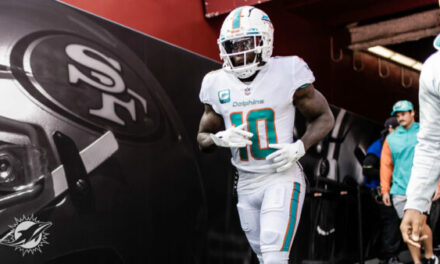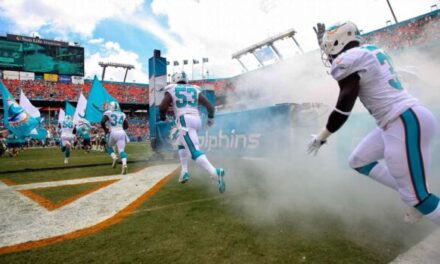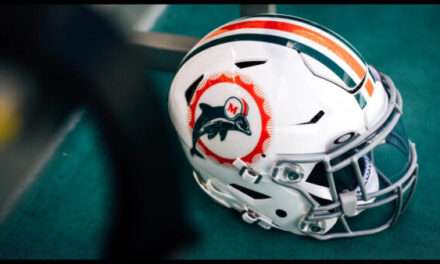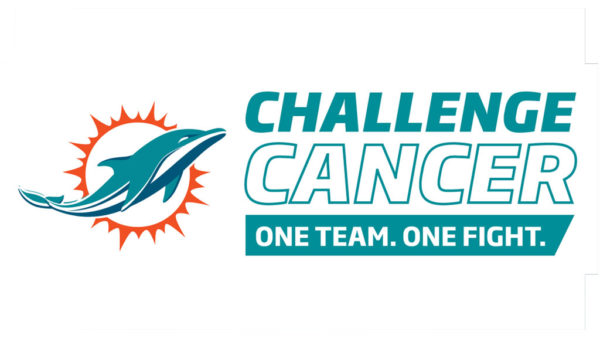
“This is not going to happen to us again.”
Those words, spoken by Miami Dolphins Head Coach Don Shula, came in the locker room of Tulane Stadium in New Orleans on January 16, 1972. They became the first brick of the foundation upon which was built a perfect season and two Super Bowl championships over the next two years.
The Dolphins had just fallen to the Dallas Cowboys in Super Bowl VI. The 24-3 score was not indicative of the way Dallas had dominated the game, assisted by numerous Dolphins mistakes.
When highlights are shown from that game, inevitably the first one is the play where Dolphins quarterback Bob Griese was being relentlessly chased by Dallas defensive tackle Bob Lilly. Griese had dropped back to pass and was trying to avoid a sack. He kept retreating until Lilly dropped him for a 29-yard loss, still the biggest loss on a single play in Super Bowl history.
The Cowboys website refers to this play as “One of the shining moments in the early history of the Cowboys organization.”
Griese’s retreat is remembered somewhat less fondly by Dolphins players and fans. It was symbolic of a team that was not yet ready to take the final step toward becoming champions.
The city of Miami was overjoyed that their Dolphins had even made it to the Super Bowl in only the sixth year of the franchise’s existence. On the way, the team had secured two impressive playoff wins. They had outlasted the Kansas City Chiefs 27-24 in the longest NFL game ever played, then dominated the defending champion Baltimore Colts 21-0 before a raucous white handkerchief waving crowd at the Orange Bowl.
Despite the Super Bowl thrashing their heroes had endured, the city leaders still wanted to honor the Dolphins with a parade.
Don Shula was less than receptive to the idea. “When we came back to Miami, they wanted to have a parade for us in downtown Miami. I refused to have the parade. I said I don’t believe in a parade for losers.”
Shula took the Super Bowl VI loss personally. He was still smarting from his Baltimore Colts suffering one of the greatest upsets in history to Joe Namath’s New York Jets only three years earlier in Super Bowl III. That game was, ironically, played in Miami’s Orange Bowl.
[pickup_prop id=”26563″]
Shula’s Colts could not overcome the hangover of that loss the following season, compiling a relatively lackluster 8-5-1 record. The disappointment of the fans and especially Baltimore owner Caroll Rosenbloom left Shula open to overtures from Dolphins owner Joe Robbie. On February 18, 1970, Don Shula took his talents to South Beach and became Miami’s head coach, general manager, and minority owner. In only two years, Shula developed the young talent and rejects from other teams he inherited, added players to fill holes, and molded them into a team that was on the cusp of becoming champions.
That was not good enough for Don Shula, painfully aware of his reputation of not being able to win the “big game.” He would not allow it to be good enough for his players and the Miami organization either.
So begins our journey back 50 years to The Perfect Season. I will be presenting a weekly chronicle of the 1972 Dolphins, sharing the stories of how they moved from a stinging Super Bowl loss to 17-0 and became champions. Don Shula will be the star of this series, but you will see the stories of many other key people from that season. It was not a homogenous group, but it was one that overcame every challenge by individuals putting the team’s success ahead of their own.
They were The Perfect Team. Or at least they would be. Let’s pick up the story in the spring of 1972.
One part of the Dolphins roster that was far from perfect was the quarterback situation behind starter Bob Griese.
The year before, Miami had veteran second-string quarterback George Mira, who had joined the Dolphins for the 1971 season. He was a local college hero, having played at the University of Miami from 1961-63. Mira led the Hurricanes to two bowl games and twice had the most passing yards in the nation.
Unfortunately, Mira’s pro career never developed beyond that of a journeyman backup. Before Miami, he had been with San Francisco, Philadelphia, and Baltimore. In 1971, he completed only 36.7% of his 30 pass attempts. That was the third straight season, in limited playing time, that he had fallen below a 40% completion rate.
Mira had replaced John Stofa, an original Dolphin and a five-year veteran who had completed only 30.2% of his 53 passes in 1970. Unfortunately for Stofa, he suffered an injury in 1971 that opened the door for Mira. Stofa was later dealt to the Denver Broncos but never played another NFL game.
Mira had been a slight improvement over Stofa but was hardly much of an insurance policy should something happen to Griese. Mira had undergone surgery on his throwing elbow after the 1971 season, causing further concern and prompting the Dolphins to consider other options.
Then on April 25, 1972, the Baltimore Colts placed their backup quarterback, Earl Morrall, on irrevocable waivers. Morrall was approaching his 38th birthday, and Baltimore unable to find a trade partner. The Colts were still in the sane pre-Robert Irsay days and reasonably figured keeping both Morrall and soon-to-be 39-year-old legend Johnny Unitas for another season was not a good idea. Coach Don McCafferty said, “We decided after the season that, because of their age, we could no longer go along with both of them. We had to draw the line somewhere.”
Shula, on the other hand, already had an excellent young quarterback in Griese, the most recognizable player on the Dolphins despite his gaffe in Super Bowl VI. Griese was only 27 years old and coming into his prime, and Shula liked the security of a proven veteran on the roster to back him up. The Dolphins, the only team to put in a final waiver claim, invested the $100 fee to acquire Morrall.
There were two other quarterbacks besides Griese and Mira in the Dolphins training camp, neither of who had ever played an NFL game. Jim Del Gaizo had been on the Dolphins taxi squad in 1971. He was another college star from the state of Florida, passing for the third most yards in the nation in 1968 for the University of Tampa. Craig Curry grew up in the Miami suburb of Coral Gables and led the Big Ten in total offense in 1971, playing for Minnesota. He was the Dolphins 8th round draft pick in 1972.
Miami’s QB group was an example of how difficult it was at that time to properly draft and select a quarterback out of college that could be developed over time into a solid, if not great, NFL quarterback.
College football in the early 1970s was a much different game than it became in the 21st century. Most coaches in that era subscribed to the philosophy credited to either Darrel Royal of Texas or Woody Hayes of Ohio State, “Three things can happen to you whenever you throw the football, and two of them are bad.” Not liking those odds, most teams were dedicated to the running game, and many quarterbacks were runners first, passers second.
Scouting was still in its early days of learning how to break down film and analyze measurables, and this combination made selecting a quarterback in the draft quite the roll of the dice.
The Dolphins had one of the best talent evaluators in the game, director of player personnel Joe Thomas. He had found a quarterback who presence could have closed the door to Morrall in Miami. Thomas had drafted Notre Dame quarterback Joe Theismann in the 4th round of the 1971 draft.
Theismann never played for Miami. After souring on negotiations with Thomas and Dolphins owner Joe Robbie, Theismann signed a three-year contract with the Toronto Argonauts of the Canadian Football League. This would not be the last time Miami lost talent to a team from that city.
At 38 years old, though, would Morrall be that much better than the young, unproven quarterbacks already on the roster? Morrall began his NFL career when Curry was in the first grade, and Del Gaizo was still trying to master writing in cursive. Would he still have anything left in the tank?
Morrall had started nine games for the Colts in 1971 while Unitas recovered from an offseason Achilles tendon injury. Baltimore went 7-2 in those starts, but he threw twelve interceptions vs. only seven touchdowns and completed only 50.3% of his passes.
Miami would be Morrall’s sixth team, and he did not expect this move to be a difficult transition. “The system in Miami will be primarily the same that I’ve been adjusted to in the last four years. I had to go somewhere after waivers cleared, I’m glad it was Miami.”
Shula was pleased to add Morrall to the Dolphins roster, “The guy’s won a lot of ball games for me. He’s an intelligent quarterback and a fine individual.” Morrall was named the NFL MVP in 1968, playing for Shula’s Colts when he replaced an injured Unitas. He was the goat, however, of their Super Bowl loss to the Jets. Morrall had redeemed himself in Super Bowl V, relieving an injured Unitas and leading the Colts to a 16-13 win over the Dallas Cowboys.
Don Shula’s redemption, however, had not yet come. He was determined to wait for it no longer.
There would be no more retreat by Shula’s Miami Dolphins. The only direction they would move in 1972 was forward into history.
Coming Next Week: Chapter 2-Expectations
Coach Shula’s expectations for the 1972 Dolphins were extremely high, but they were not shared by everyone outside the organization. We’ll see what what prognosticators were saying about the Dolphins’ chances and review their first preseason game at Detroit.














excellent start to a very promising series thank you for getting a chance to relive my favorite season.